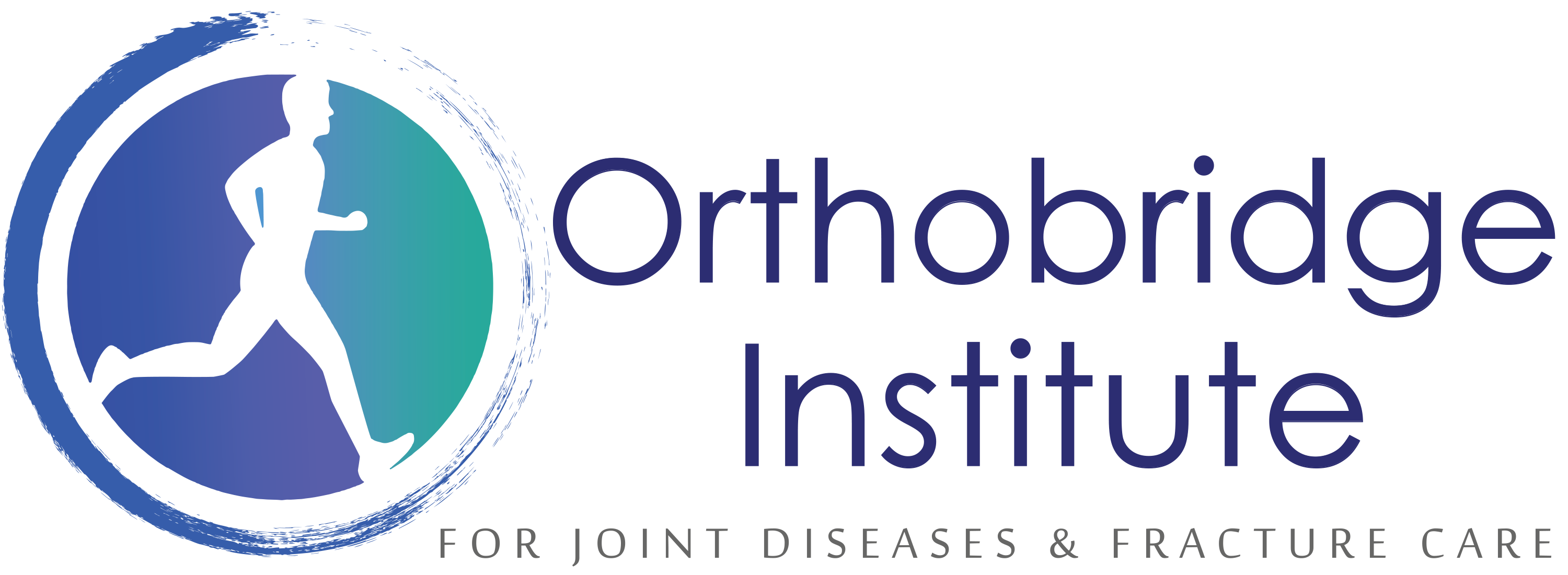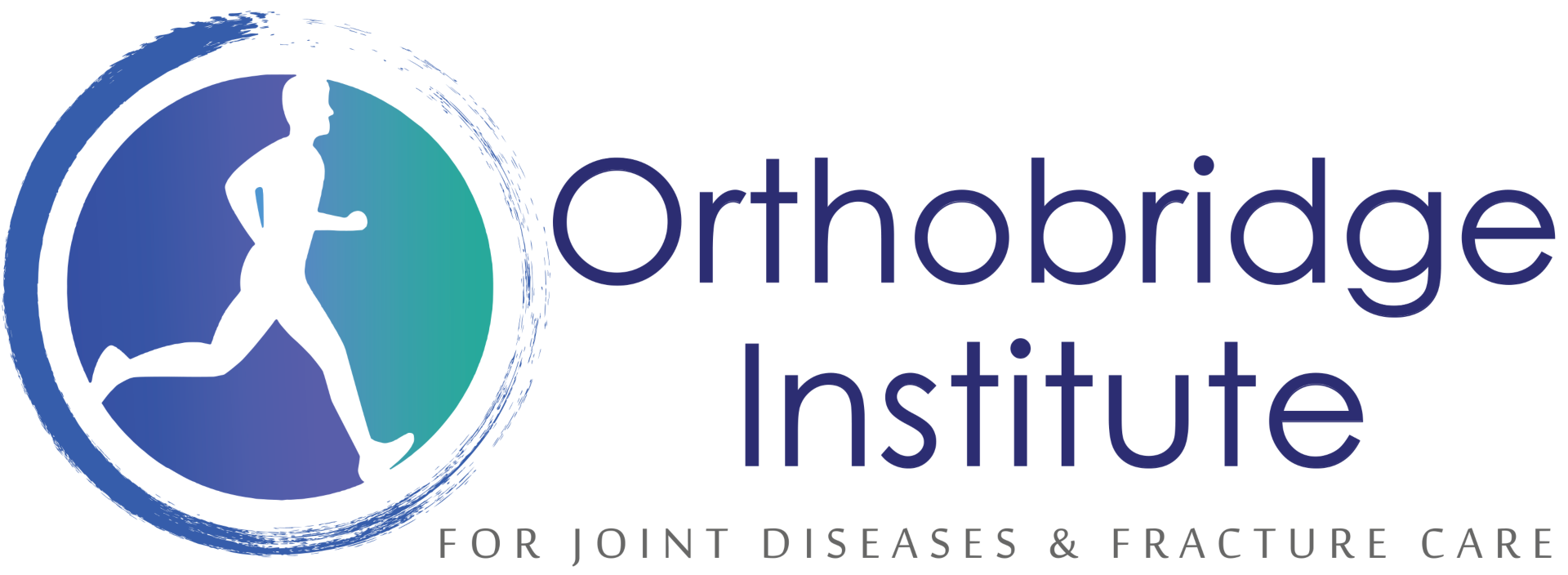Bursitis of the Hip (Trochanteric & iliopsoas bursa)
Learn more about Bursitis of the Hip (Trochanteric & iliopsoas bursa) which we treat at Orthobridge Orthopedic Centre.
Bursitis of the Hip (Trochanteric & iliopsoas bursa)
Bursitis is inflammation of the bursa. There are two major bursae in the hip that typically become irritated and inflamed. One bursa covers the bony point of the hip bone called the greater trochanter. Inflammation of this bursa is called trochanteric bursitis.
Another bursa — the iliopsoas bursa — is located on the inside (groin side) of the hip. When this bursa becomes inflamed, the condition is also sometimes referred to as hip bursitis, but the pain is located in the groin area. This condition is not as common as trochanteric bursitis, but is treated in a similar manner.
Causes
Trochanteric bursitis can be caused by repetitive stress. It can be caused by a fall or a hard blow to the outer side of your hip. It can be caused by poor posture. It can also be caused by certain diseases and conditions.

Symptoms
Pain is a primary symptom of iliopsoas bursitis. You may experience pain that starts around the front of your hips. The pain may also radiate down your thighs to the knees. Some people also have pain in their buttocks. They may experience stiffness and tightness in the mornings.
Initially, you may notice mild discomfort while doing certain activities, such as:
- walking up a flight of stairs
- exercising
- extending your leg
- rising from a seated position
- The condition can progress and cause more pain over a period of months or weeks.
- Pain and weakness may also cause limping.
This pain may feel worse during physical activity that involves your hip. It may also feel worse when you lie on the affected side of your body.
Treatment
Treatment options include rest, medications, and physical therapy. You may benefit from the temporary use of a cane or crutches. If these methods are not helpful, you may benefit from a surgical procedure.
Your healthcare provider can create a care plan that is right for your needs.

Nonsurgical Treatment
The initial treatment for hip bursitis does not involve surgery. Many people with hip bursitis can experience relief with simple lifestyle changes, including:
- Activity modification: Avoid activities that worsen symptoms.
- Nonsteroidal anti-inflammatory drugs (NSAIDs): Ibuprofen, naproxen, piroxicam, celecoxib, and others, may relieve pain and control inflammation. Use NSAIDs cautiously and for limited periods. Talk with your doctor about the NSAIDs you use. NSAIDs may have adverse side effects if you have certain medical conditions or take certain medications.
- Assistive devices: Use a walking cane or crutches for a week or more when needed.
- Physical therapy: Your doctor may prescribe exercises to increase hip strength and flexibility. You may do these exercises on your own, or a physical therapist may teach you how to stretch your hip muscles and use other treatments such as rolling therapy (massage), ice, heat, or ultrasound.
- Steroid injection: Injection of a corticosteroid along with a local anesthetic may also be helpful in relieving symptoms of hip bursitis. This is a simple and effective treatment that can be done in the doctor’s office. It involves a single injection into the bursa. The injection may provide temporary (months) or permanent relief. If pain and inflammation return, another injection or two, given a few months apart, may be needed. It is important to limit the number of injections, as prolonged corticosteroid injections may damage the surrounding tissues.
Surgical Treatment
Surgery is rarely needed for hip bursitis. If the bursa remains inflamed and painful after all nonsurgical treatments have been tried, your doctor may recommend surgical removal of the bursa. Removal of the bursa does not hurt the hip, and the hip can function normally without it.
A newer technique that is gaining popularity is arthroscopic removal of the bursa. In this technique, the bursa is removed through a small (1/4-inch) incision over the hip. A small camera, or arthroscope, is placed in a second incision so the doctor can guide miniature surgical instruments and cut out the bursa. This surgery is less invasive, and recovery is quicker and less painful.
Both types of surgeries are done on an outpatient (same-day) basis, so an overnight stay in the hospital is not usually necessary. Early research shows arthroscopic removal of the bursa to be quite effective, but this is still being studied.
Hear from some of our patients
Out of country patients
Because of Col (Dr) Adari’s extensive training and experience in elbow arthroscopy, patients travel from all areas of the world for their elbow arthroscopy in Kenya.
If you are an out of the country patient, feel free to let us know so we can accommodate an appropriate time for your consultation with Col (Dr) Adari.
Col (Dr) Adari is known as a top-rated orthopedic & trauma surgeon for elbow arthroscopy in Nairobi, Kenya, and across East Africa, Central Africa, and West Africa.
If you are work – traveling expatriate on diplomatic missions, feel free to contact us so we can accommodate an appropriate time best suited to you for your consultation with Col (Dr) Adari.
Contact us today to reserve your consultation, we are more than happy to assist you with any queries you may have prior to seeing the doctor.
Our Affiliations










